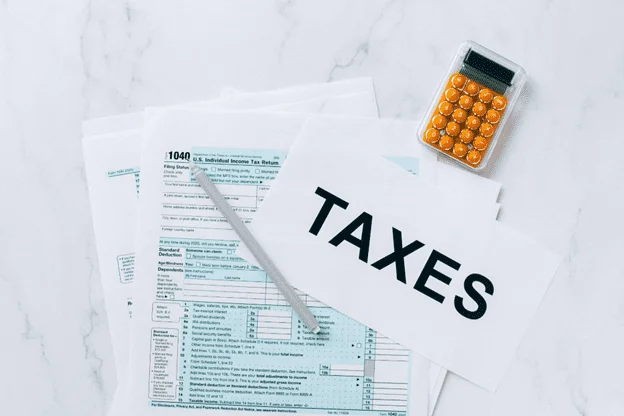Last Updated on March 9, 2024 by Nasir Hanif
https://www.pexels.com/photo/tax-documents-on-the-table-6863332/
Understanding the intricacies of tax liens can be as daunting as deciphering ancient hieroglyphs. However, it’s a situation many face, and unraveling this mystery is essential for financial stability and peace of mind. A tax lien represents a legal claim by the government against your property when you neglect or fail to pay a tax debt. It is one of the most stringent actions taken by the IRS and can disrupt your financial life if not addressed promptly and effectively.
In this guide, we’ll explore the nature of tax liens and provide you with a step-by-step process to resolve these issues with the IRS.
Table of Contents
1. Recognizing How A Tax Lien Is Implemented
The inception of a tax lien begins when you receive a bill from the IRS that states your tax debt and you either ignore it or are unable to pay the amount due. The IRS then assesses your liability and sends a notice and demand for payment. If you still haven’t settled your debt, the IRS files a public document, the Notice of Federal Tax Lien, alerting creditors that the government has a legal right to your property.
The presence of a tax lien is a serious matter because it can significantly lower your credit score, making it harder for you to obtain loans or refinance existing debts. It attaches not only to the property you own at the time of the lien but also to property acquired thereafter. To prevent the situation from escalating, it’s imperative to either avoid or resolve a tax lien as soon as possible.
2. Analyzing Your Financial Situation And Compliance

https://www.pexels.com/photo/marketing-person-laptop-technology-6801649/
Before you can effectively tackle a tax lien, you need to have a clear picture of your financial situation. Gather all pertinent documents related to your income, expenses, assets, and debts. With this information, you can assess your ability to pay the tax lien in full or if you need to seek alternative payment options.
Equally important is ensuring that you are in compliance with all filing requirements. The IRS is more likely to work with you if they see that you are making a concerted effort to settle your accounts. This includes filing any past due tax returns and making necessary estimated tax payments for the current year.
3. Exploring Payment Options With The IRS
Once you’re in compliance, it’s time to explore payment options. The IRS offers several methods to settle tax debts, and finding the right one depends on your individual circumstances.
- Installment Agreements: You can make monthly payments through an installment agreement if you’re not financially able to pay your tax debt immediately.
- Offer in Compromise: This program allows you to settle your tax debt for less than the full amount owed if you meet certain conditions regarding your income and assets.
- Temporary Delay of Collection: If the IRS determines you’re unable to pay, it may delay collection until your financial condition improves.
Carefully consider which option best suits your situation and be prepared to provide supporting documentation to the IRS.
4. Engaging With The IRS Proactively
Communication with the IRS is vital. Contact them as soon as you realize you’re in danger of a tax lien or as soon as one is placed. The IRS is often willing to work with taxpayers who show a genuine desire to resolve their tax issues. When communicating with the IRS, keep records of all correspondence, and consider seeking the assistance of a tax professional if the process becomes too complex.
5. Seeking Professional Assistance

https://www.pexels.com/photo/man-in-white-dress-shirt-analyzing-data-displayed-on-screen-7567554/
Dealing with the IRS can be overwhelming, especially when a tax lien is involved. Tax professionals, such as Certified Public Accountants (CPAs), enrolled agents, or tax attorneys, can provide invaluable assistance. They can negotiate with the IRS on your behalf, ensure that all paperwork is completed correctly, and may even help you get penalties reduced.
6. Preventing Future Tax Liens
Prevention is the best strategy. Stay in compliance by filing your taxes on time and paying any owed taxes promptly. Consider adjusting your withholdings or making estimated tax payments to avoid future tax debts. Keep abreast of tax law changes that may affect your financial situation.
Conclusion
A tax lien is a stark indicator that you need to reassess and take action on your financial obligations to the IRS. It’s a complex issue but not insurmountable. By understanding what a tax lien is, assessing your financial situation, exploring payment options, communicating with the IRS, and possibly enlisting professional help, you can resolve your tax issues and restore your financial standing.
Remember, the key to managing tax liens is to act swiftly and thoughtfully. The IRS’s main interest is to collect the taxes owed, but they are willing to help taxpayers who are proactive in resolving their tax debts.















